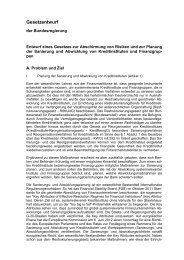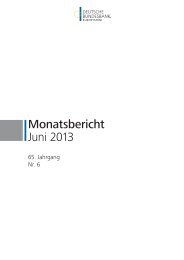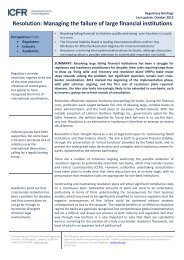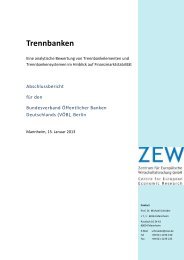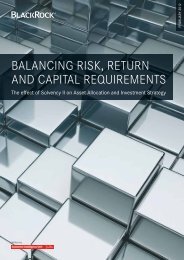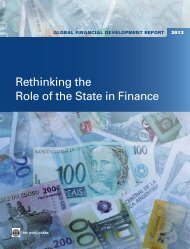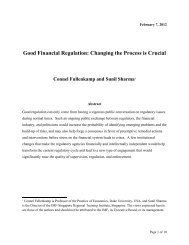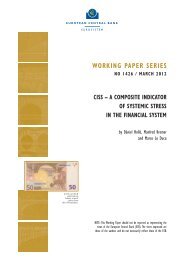3 Issuing costs of state guaranteed bonds - Financial Risk and ...
3 Issuing costs of state guaranteed bonds - Financial Risk and ...
3 Issuing costs of state guaranteed bonds - Financial Risk and ...
Create successful ePaper yourself
Turn your PDF publications into a flip-book with our unique Google optimized e-Paper software.
2 Overview <strong>of</strong> <strong>state</strong> guarantee schemes<br />
Figure 4: Maturity structure <strong>of</strong> SG <strong>bonds</strong> at issue by number <strong>of</strong> issues at different maturities<br />
Number <strong>of</strong> issuances<br />
400<br />
350<br />
300<br />
250<br />
200<br />
150<br />
100<br />
50<br />
0<br />
Source: Bloomberg<br />
1 - 1.5 1.5 - 2 2 - 2.5 2.5 - 3 3 - 3.5 3.5 - 4 4 - 4.5 4.5 - 5<br />
2.5 Pricing <strong>of</strong> issuances<br />
2.5.1 Fees<br />
Average maturity at issue (yrs)<br />
In order to access a <strong>state</strong> guarantee, banks had to pay an annual fee to the government acting as<br />
guarantor <strong>of</strong> 50 basis points (bps) plus the median five-year CDS spread <strong>of</strong> the issuing bank over<br />
the period January 2007 – August 2008, <strong>and</strong> in some cases an additional premium based on the<br />
credit rating <strong>of</strong> the issuing bank.<br />
The inclusion <strong>of</strong> a CDS spread measure in the <strong>state</strong> guarantee fee implies a risk-based structure.<br />
The median five-year CDS spread over January 2007 – August 2008 for Fortis Bank, for example,<br />
was 91.6 bps implying that it paid 141.6 bps annually on the value <strong>of</strong> its SG <strong>bonds</strong> to its guarantors.<br />
Nordea Bank, as another example, would have had to pay only 124.3 bps on the value <strong>of</strong> SG <strong>bonds</strong><br />
as its median five-year CDS spread over January 2007 – August 2008 was lower – at 74.3 bps.<br />
Interestingly, however, Nordea Bank chose not to issue SG <strong>bonds</strong>, suggesting that its total issuing<br />
<strong>costs</strong> were lower if it issued non-SG <strong>bonds</strong>.<br />
2.5.2 Issuer versus sovereign credit ratings<br />
In general, the range <strong>of</strong> issuer ratings for SG <strong>bonds</strong> was relatively large: close to 90% <strong>of</strong> banks<br />
received one <strong>of</strong> five types <strong>of</strong> 'A' rating <strong>and</strong> slightly more than 10% <strong>of</strong> banks received one <strong>of</strong> six<br />
types <strong>of</strong> 'B' rating. Despite this, banks <strong>of</strong> a wide range <strong>of</strong> creditworthiness were issuing SG <strong>bonds</strong> at<br />
relatively low issuing cost compared to non-SG <strong>bonds</strong>, as shown in Figure 5. This suggests that<br />
issuer credit ratings are relatively unimportant to the pricing <strong>of</strong> credit risk embedded within SG<br />
<strong>bonds</strong>, <strong>and</strong> investors treated SG <strong>bonds</strong> as gaining exposure to sovereign risk.<br />
23



